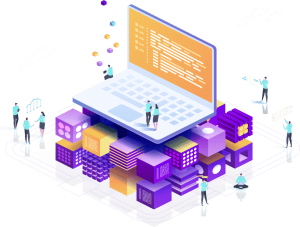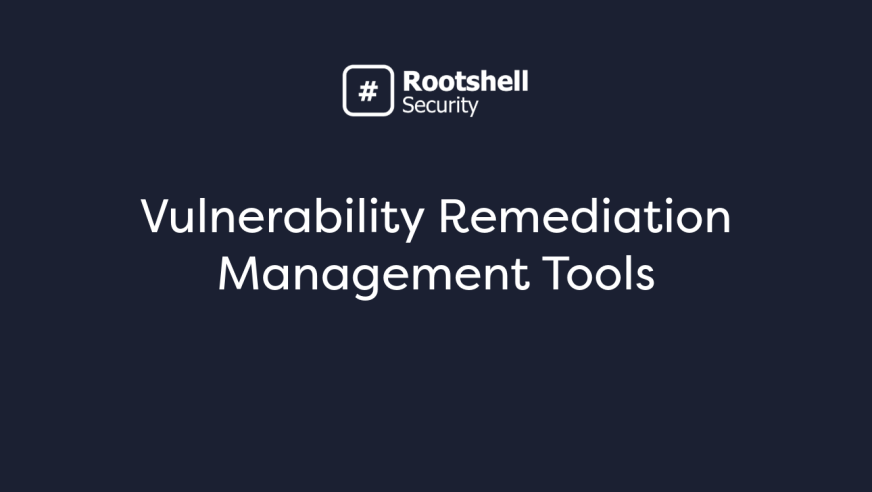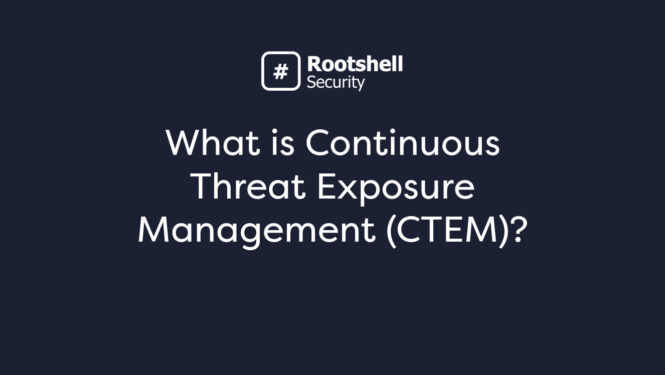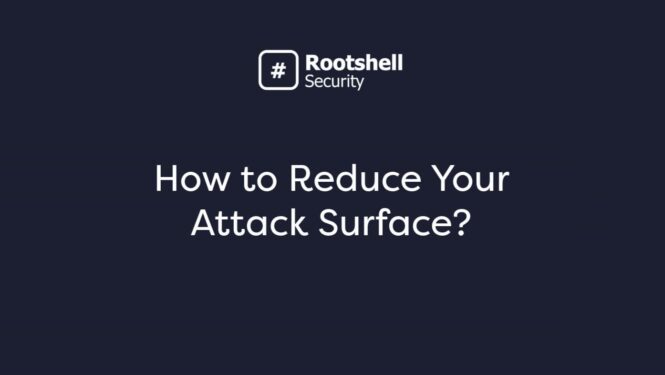Effective vulnerability management is paramount as cyber threats continue to rise. Vulnerability Remediation Management Tools can help IT security teams gain more insight from their data and streamline processes, resulting in faster and more effective remediation. Below, we discuss everything you need to know about vulnerability remediation management tools and how they can benefit your organization.
What is Vulnerability Management?
Vulnerability management is the cyclical process of identifying, evaluating, prioritizing, and remediating security flaws within an organization’s network, systems, and applications.
The goal of vulnerability management is to ensure that organizations have complete visibility and control of weaknesses that exist within their IT estates on a continuous basis.
Vulnerability management is not to be confused with a vulnerability assessment. Vulnerability management encompasses the end-to-end process of managing security issues, from discovery to remediation. On the other hand, a vulnerability assessment is a type of IT security test that discovers security issues within an organization’s network.
Why is Vulnerability Management Important?
Vulnerability management is an essential part of an organization’s IT security strategy.
Effective vulnerability management helps IT security teams ensure that critical issues are discovered, analysed, and remediated as fast and efficiently as possible. This is critical to minimising an organization’s attack surface and preventing cyberattacks, which could have devastating consequences for an organization’s data, personnel, and reputation.
Vulnerability management also helps organizations allocate resources more effectively. Not all security vulnerabilities pose the same risk, and many may not even need to be remediated. Effective vulnerability management provides a framework for security teams to assess and prioritise vulnerabilities, so organizations can ensure that resources are allocated to the most critical issues.
Another reason why vulnerability management is so important is because an organization’s threat landscape is ever-changing. The cyclical process of vulnerability management helps security teams assess and measure their security posture on a continuous basis so that there is very little opportunity for critical issues to be left unaddressed.
What are Vulnerability Remediation Management Tools?
Vulnerability Remediation Management tools can help IT security teams improve a wide range of processes within their vulnerability management cycles, from data analysis and reporting, to project management and collaboration, and much more.
Many different tools can aid specific parts of vulnerability management, such as ticketing systems to assign remediation tasks, and spreadsheets to track open issues.
However, dedicated Vulnerability Remediation Management tools consolidate these different functionalities in one place, as well as providing features specific to improving remediation, such as reducing time-to-remediate (TTR).

The Benefits of Vulnerability Remediation Management Tools
Vulnerability remediation management tools empower IT security teams to implement vulnerability management best practices, by providing the following benefits.
Visibility: Vulnerability Remediation Management tools enable you to combine threat and vulnerability management by consolidating different types of assessments alongside each other. This helps you gain greater visibility of your threat landscape as a whole.
Vendor-agnostic: The best Vulnerability Remediation Management tools don’t tie you to a specific vendor, enabling you to consolidate results from different suppliers.
Real-time: As soon as a critical vulnerability is discovered, time is of the essence. Vulnerability Remediation Management tools can facilitate the delivery of your assessment results in real-time, so you can address high priority issues as soon as they are identified.
Continuous: Between security assessments, your organization could be at risk. Vulnerability Remediation Management tools ensure you are gaining continuous insight into your threats and remediating on an ongoing basis.
Intelligence-driven: Vulnerability Remediation Management tools integrate threat intelligence with your vulnerability data. This helps teams gain greater context of their issues so they can prioritize most effectively and accurately evaluate risk.
Automation: Vulnerability Remediation Management tools cut out countless manual and time-consuming tasks from your processes, from data handling to project management, freeing up essential time for what’s most important.
Insight: There are many metrics that are valuable to track within vulnerability remediation, but calculating these manually is laborious. Vulnerability Remediation Management tools generate insightful dashboards and reports, such as your mean time-to-remediate.
Centralized Data: Vulnerability management can inundate you with data. Vulnerability Remediation Management tools provide a central hub for your data from different security assessments. This saves you time, frustration and puts critical information at your fingertips.
Rootshell Platform: Next Generation Vulnerability Remediation Management Tool
The Rootshell Platform is a vendor-neutral vulnerability remediation management tool that improves remediation from start to finish.
Rootshell’s industry-leading feature set provides IT security teams with all the tools needed to streamline and accelerate remediation. This includes consolidating data from any type of assessment, providing real-time insight into threat landscapes, turning static data into dynamic and actionable results, and much more.
- Consolidate Your Supplier Assessment Data: Import any assessment result into The Rootshell Platform; store data from any penetration testing vendor or security service provider in one centralized hub.
- Integrate and Standardize Your Assessment Data: Generate a database for your results in one consistent format. No longer analyse assessment results in silos; view data from different threat assessments alongside each other.
- Contextualize and Prioritize Your Assessment Data: Receive real-time insights and gain greater context of your issues, helping you prioritize most effectively.
- Streamline Your Remediation Workflow: Make remediation faster and more efficient, with third-party integrations, collaboration tools, real-time updates from testers, and more.
- Track and Validate Your Remediation Results: Measure your remediation efforts against your service level agreements and track key metrics, such as your monthly remediation rate.
- Visualize and Analyse Technical Risk Across the Whole Organization: Gain a holistic view of your global threat landscape; effortlessly analyse your technical risk with insightful dashboards and automated reporting.



